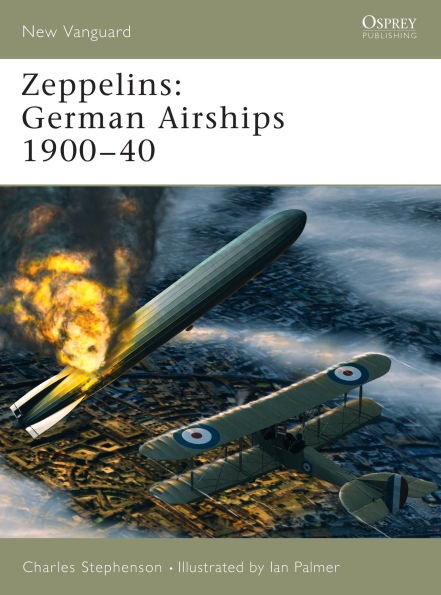On 2 July 1900 the people of Friedrichshafen, Germany, witnessed a momentous occasion - the first flight of LZ 1, Count Ferdinand von Zeppelin's first airship.
Although deemed a failure, a succession of better craft (LZ2 to 10) enabled the Zeppelin to expand into the consumer market of airship travel, whilst also providing military craft for the German Army and Navy. The years of the Great War saw the Zeppelins undertake strategic bombing missions against Great Britain.
This engaging, illustrated study covers the post-war fate of the Zeppelins, including the crash of the Hindenburg, and their use by the Luftwaffe at the beginning of World War II.
1008186768
Although deemed a failure, a succession of better craft (LZ2 to 10) enabled the Zeppelin to expand into the consumer market of airship travel, whilst also providing military craft for the German Army and Navy. The years of the Great War saw the Zeppelins undertake strategic bombing missions against Great Britain.
This engaging, illustrated study covers the post-war fate of the Zeppelins, including the crash of the Hindenburg, and their use by the Luftwaffe at the beginning of World War II.
Zeppelins: German Airships 1900-40
On 2 July 1900 the people of Friedrichshafen, Germany, witnessed a momentous occasion - the first flight of LZ 1, Count Ferdinand von Zeppelin's first airship.
Although deemed a failure, a succession of better craft (LZ2 to 10) enabled the Zeppelin to expand into the consumer market of airship travel, whilst also providing military craft for the German Army and Navy. The years of the Great War saw the Zeppelins undertake strategic bombing missions against Great Britain.
This engaging, illustrated study covers the post-war fate of the Zeppelins, including the crash of the Hindenburg, and their use by the Luftwaffe at the beginning of World War II.
Although deemed a failure, a succession of better craft (LZ2 to 10) enabled the Zeppelin to expand into the consumer market of airship travel, whilst also providing military craft for the German Army and Navy. The years of the Great War saw the Zeppelins undertake strategic bombing missions against Great Britain.
This engaging, illustrated study covers the post-war fate of the Zeppelins, including the crash of the Hindenburg, and their use by the Luftwaffe at the beginning of World War II.
16.0
In Stock
5
1

Zeppelins: German Airships 1900-40
48
Zeppelins: German Airships 1900-40
48Related collections and offers
16.0
In Stock

Product Details
| ISBN-13: | 9781780965130 |
|---|---|
| Publisher: | Bloomsbury Publishing |
| Publication date: | 03/20/2012 |
| Series: | New Vanguard , #101 |
| Sold by: | Barnes & Noble |
| Format: | eBook |
| Pages: | 48 |
| File size: | 8 MB |
About the Author
From the B&N Reads Blog
